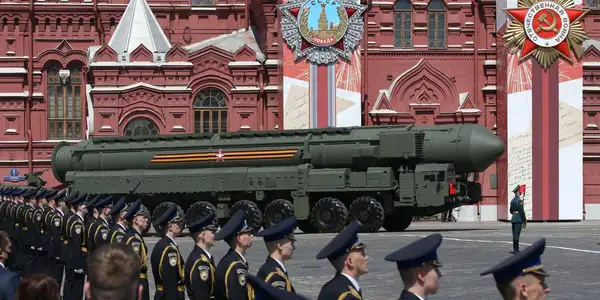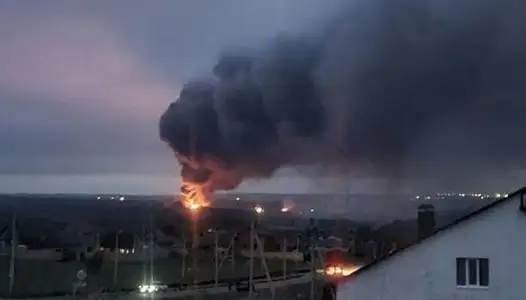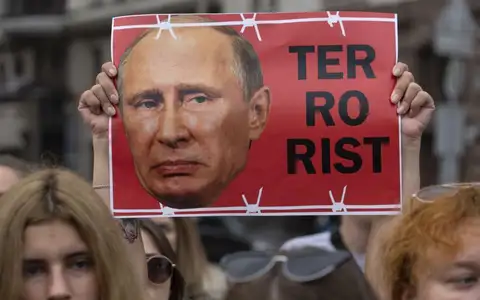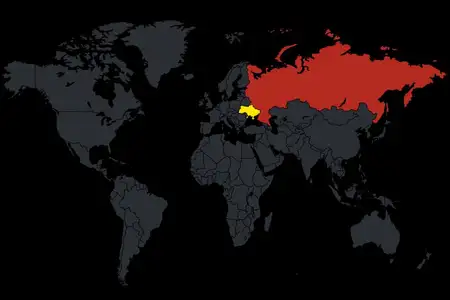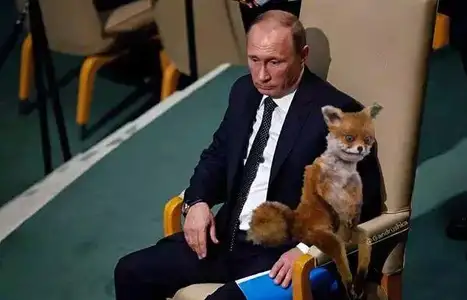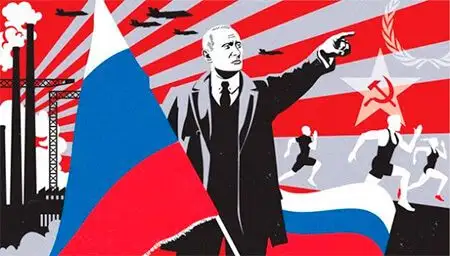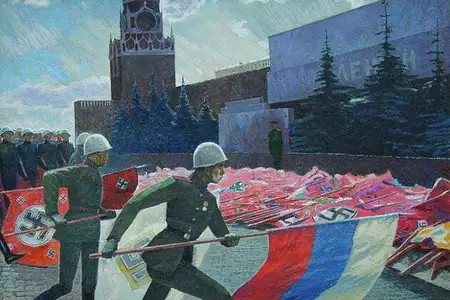“Wagner Line”: an effective defense or a pathetic travesty?
Not so long ago, the infamous Wagner Group of Yevgeny Prigozhin began to build fortifications in eastern Ukraine with the flashy title “Wagner Line”.
Does this project suggest that Russia is preparing for a deep defense along the current front line? Or is it just a parody of the Mannerheim, Maginot, and Siegfried lines we know from the World War II history?..
Let’s look into what the “Wagner Line” is and experts’ opinions about its effectiveness and the problems it may pose for the Ukrainian army.

PMC Wagner Group and Yevgeny Prigozhin
Before talking about the “Wagner Line” itself, it is worth recalling what is the Wagner Group, which is so often mentioned in reports of the modern Russian-Ukrainian war.
Wagner Group is a Russian non-state armed formation with an unclear legal status. It is variously described as a private military company (PMC), a network of mercenaries, or a de facto private army of Russian President Vladimir Putin. The group operates beyond the law because private military contractors are officially forbidden in Russia.
The group came to global prominence during the war in the Donbas in Ukraine, where it aided separatist forces of the self-declared Donetsk and Luhansk People’s Republics from 2014 to 2015. Its contractors have reportedly taken part in various conflicts around the world – including the civil wars in Syria, Libya, the Central African Republic (CAR), and Mali, often fighting on the side of forces aligned with the Russian government. Wagner mercenaries have been accused of war crimes in areas where they are deployed. The accusations include rapes and robberies of civilians, and torturing of deserters.

In December 2021, the European Union imposed sanctions against the PMC, accusing the group of undermining the territorial integrity and sovereignty of Ukraine, destabilizing the situation in Syria and Libya, as well as gross human rights violations. On March 8, 2022, after the Russian invasion of Ukraine, Japan also imposed sanctions against the group.
Since 2014, the Wagner PMC has been associated with the name of Yevgeny Prigozhin, a Russian businessman and oligarch, who is known as a confidant of Russian President Vladimir Putin. He is also called “Putin’s chef”. And only in modern times, in late September 2022, Prigozhin finally admitted that it was he who founded the “patriot group” in 2014 to support the separatists in the Donbas.
The Washington Post wrote in early October, citing U.S. intelligence data, that one person in Putin’s inner circle had directly pointed out to him the mistakes that Russia had made during the war in Ukraine. But his name was unknown to journalists. Now the newspaper, through its sources in the U.S. government, found out that the intelligence report referred specifically to Prigozhin.

In recent months, there has been increasing talk of a possible palace coup in Russia. The media, citing various sources throughout September and October, reported a split in Putin’s inner circle and a struggle for power. Some experts believe that a palace coup is already underway. Its leaders are considered to be “Kremlin war hawks”: besides Yevgeny Prigozhin, these are also the head of the Chechen Republic, Ramzan Kadyrov, and Sergey Surovikin, recently appointed commander of the United Russian Group of Forces in the war in Ukraine.
Therefore, the struggle for power and Putin’s favor among his entourage is probably one of the root causes of the construction of the “Wagner Line”. As Ukrainian experts note, Prigozhin is not subordinate to the military command and wants to demonstrate to Putin personally that the combat capabilities and capacities of his units are higher than those of the regular armed forces of the Russian Federation.
What is the “Wagner Line”?
On October 19, Putin signed a decree on martial law in the occupied territories of Donetsk, Luhansk, Kherson, and Zaporizhzhia regions of Ukraine. This should indicate the Russian president’s confidence in the future. However, on the same day, Prigozhin announced the construction of a defense line and the formation of a “people’s militia” in the Belgorod region of the Russian Federation.

Later, the RIA FAN agency, which is affiliated with the Wagner Group, published a map of the future defense line. According to it, the fortifications were to stretch for more than 200 km deep into the rear of the occupied territories in the east of Ukraine: from Svitlodarsk to almost Kreminna, then through Lysychansk and then along the southern bank of the Siversky Donets and the border with the Russian Federation. Beyond the defense line, Prigozhin left captured Novoaidar, Severodonetsk, Kreminna, and Horlivka. Thus, this line separates the nominal northern part of the Luhansk region from the southern part.
The fact that such a line is indeed under construction was confirmed by satellite images of Maxar Technologies. The images published by CNN on October 22 show an almost 1.6-kilometer-long fortification near the Russian-controlled town of Hirske in the Luhansk region.

On the same day, Governor Vyacheslav Gladkov told about the installation of “protective structures” in the Belgorod region of the Russian Federation: he published photos with two rows of concrete cones or “pyramids”.

Later, the head of the Luhansk Regional Military Administration, Sergii Haidai, reported that the Russians continue to build the “Wagner Line” near Hirske. In addition, he said that the occupiers are recruiting people through advertisements on poles to build the line, in particular bulldozers, manipulator drivers, excavator drivers, and heavy equipment drivers.
The line consists of two rows of double-row concrete cones and an anti-tank trench. The concrete cones, which are supposed to block the advance of armored vehicles, are about 90 centimeters high and the distance between them is about four meters.
In military engineering such structures are called “nonexplosive obstacles” (others are mine, explosive, electrified obstacles etc.). Nonexplosive obstacles can be antipersonnel and antitank. Concrete pyramids of the “Wagner Line” are anti-tank, they are called block obstacle, or tank traps. The unofficial name they received during the Second World War is “dragon’s teeth”. Then the dragon’s teeth were used by several armies. The idea was to slow down and channel tanks into killing zones where they could easily be disposed of by anti-tank weapons.
Why does Russia need the “Wagner Line”?
British intelligence suggests that in this way Russia is preparing for defenses much further along the front line as of this moment. And if the plans are as large-scale as Prigozhin claims, then most likely the work is aimed at integrating the Siversky Donets River into a defense zone that partly coincides with the 2015 line of control.
“The project suggests Russia is making a significant effort to prepare defenses in depth behind the current front line, likely to deter any rapid Ukrainian counter offensives,” the British Ministry of Defense said in an overview on Twitter on October 23.

Ukrainian experts agree that the erection of the “Wagner Line” indicates that the Russians are considering a retreat.
“We can assume that they are not hiding – the plans include a possible retreat to other defense lines. This is the first point. Secondly, maybe they want to prepare some unpleasant surprises there along this line, positioning their artillery and so on, for example, in case our (Ukrainian - ed.) troops approach and go to Svatove or Kremenna, to try to inflict fire attacks from there,” the head of the Ukrainian Center for Military and Political Studies Oleksandr Musiyenko believes.
Another reason, according to the expert, may be the Russian command’s realization that they cannot organize defensive positions along the city lines now, and at the same time the opportunity to use the Siversky Donets River as a natural barrier.
How effective will the “Wagner Line” be if it is completed?
“The Wagner Line” has already begun to be compared to similar defensive complexes of the 1920s-40s: the Mannerheim Line in Finland built to deter the Soviet offensive, the Maginot Line in France on the border with Germany between the world wars, and the Siegfried Line in Germany
built by the Nazis.
All of them had in one way or another fulfilled their stated functions to some extent before they were breached. Regarding the effectiveness of the “Wagner Line” as a defense complex, experts are much more skeptical.
First, to effectively stop tanks, tank traps must have several important properties:
- have a certain shape, often the shape of a cone or pyramid;
- be arranged in several rows in checkerboard pattern;
- the “pyramids” should be partially embedded in the ground;
- they should be well camouflaged if possible.
As we can see, the “Wagner Line” only partially meets these parameters.

1) The obstacles are indeed tetrahedron shaped and installed in several rows. But judging by the aerial photos, the checkerboard pattern is not respected, which already makes the “line” a sham. However, there are anti-tank trenches next to them, which do not fully, but still meet the engineer installations.
2) According to the Finnish military expert Janne Mäkitalo, the cones will not be an obstacle for Ukrainian armored vehicles. The armor can simply push the cones aside because they are not dug into the ground, but just spread out on the field. By comparison, when the Salpa Line was being built in Finland in 1940-41, the barrier stones had to be 1.4 to 1.8 meters, and a third of them had to be buried in the ground so that they would stay firmly in place even if the armor tried to tear them down.
3) In addition, as the experts explain, the effectiveness of concrete obstacles in the defense line is justified when there are poured concrete underground structures. Or they must be large in size. Then they are serious fortifications that cannot be moved, which cannot be said about the Russian “pyramids”.
4) According to military doctrine, lines of anti-tank obstacles must be camouflaged as carefully as lines of trenches or firing points. The enemy should not be aware of them until his tanks hit this obstacle. And it should be put in such a position that the enemy has no choice but to overcome them.
The “Wagner Line” obstacles are not camouflaged at all. Judging by the available data, they are located in an open field and are clearly visible from afar. Also, thanks to published maps and satellite images, we know exactly the line of their (future) location.
What the Russians are building, according to experts, looks more like a parody of the Siegfried Line, or Western Wall, a system of German long-term fortifications erected in 1936-1940 in western Germany.

Siegfried Line in Germany
“Ideally, such a line of defense should not only delay, but create a trap. When you come up and can’t go any further, you’re either forced to pull back or you get artillery fire coming at you. But after all, the question is that, first, you can bypass from the flanks, and second, you can bypass by suppressing artillery with the longer-range systems we (Ukrainian troops – ed.) have,” Oleksandr Musiyenko notes.
So, what is the danger for the Ukrainian army?
Despite the doubtful effectiveness of the “Wagner Line”, it can nevertheless create certain difficulties for the AFU. And if not to stop the advance, then at least to delay it.
“The only thing is the essence and for what such constructions are made. They are undertaken in order to further shoot artillery positions in front of the line. To expose artillery in such a way that when military heavy equipment approaches, the artillery can reach and hit them, as long as it is necessary to extend these blocks, slabs or concrete cones,” Musiyenko says.
Pavlo Lakiychuk, head of security programs at the Strategy XXI Globalist Center, notes that if the “Wagner Line” is completed, it could indeed delay the advance of the AFU. For several hours.
“Again, this is if it is completed. So far, there are only in its infancy those engineering structures that are equipped there in some areas. Well, actually, it’s hard to call it a defense line. Especially equipped in engineering terms,” the expert stressed.
So far, there are serious differences between the expected line on the published map and the reality – it has just begun to be built. Even assuming that we are talking only about concrete pyramids, it will take 2-3 months to build the line. And to create a line of defense with firing points and other engineering structures – you need much more time. Meanwhile, another, real line – the front line – is approaching the painted “Wagner line”.
It is not yet known exactly how much of what is declared on the map the Russian military has built on the ground. However, according to Oleksandr Kovalenko, a military and political observer of the Information Resistance group, even in the finished version, the maximum that the “Wagner Line” will be able to do is to slow down the advance of the AFU for about 2-3 hours – while high-precision artillery will work on a certain location. And then, if necessary, engineering equipment will erect the necessary structures in the minimum time, for example, if there are trenches, and the problem will be solved within 24 hours.

According to experts, the whole story with the defense line of Prigozhin is made for the Russians and the founder of the Wagner Group.
“So, I consider this line solely as an attempt to somehow support informationally the moral spirit of the Russians. And, of course, to Prigozhin himself to create PR on this “Wagner Line”. In front of Putin, in particular. “Here the Russian Ministry of Defense could not, Shoigu could not, and here I am trying to hold this territory, creating a line of defense,” Kovalenko notes.
So here we are back to where we have started.
The Finnish expert Janne Mäkitalo supposes that the aim is also to somehow morally support the poorly trained Russian soldiers, who are not aware of the weakness of the line. Whereas experienced soldiers understand that its effectiveness is quite low. Mäkitalo considers the military significance of the “Wagner Line” to be negligible, even if it is completed along the entire planned 200-kilometer stretch.
All in all, so far, this whole enterprise looks more like a PR campaign. And from a military standpoint, far more resources and effort are being put into it than it can be of any further benefit. But whatever this line will be or any other that the occupiers try to erect on our soil – any will be destroyed and will not be able to become an obstacle to the restoration of the independence and territorial integrity of Ukraine. After all, it is a process that cannot be stopped.
Anastasiya Glotova


















